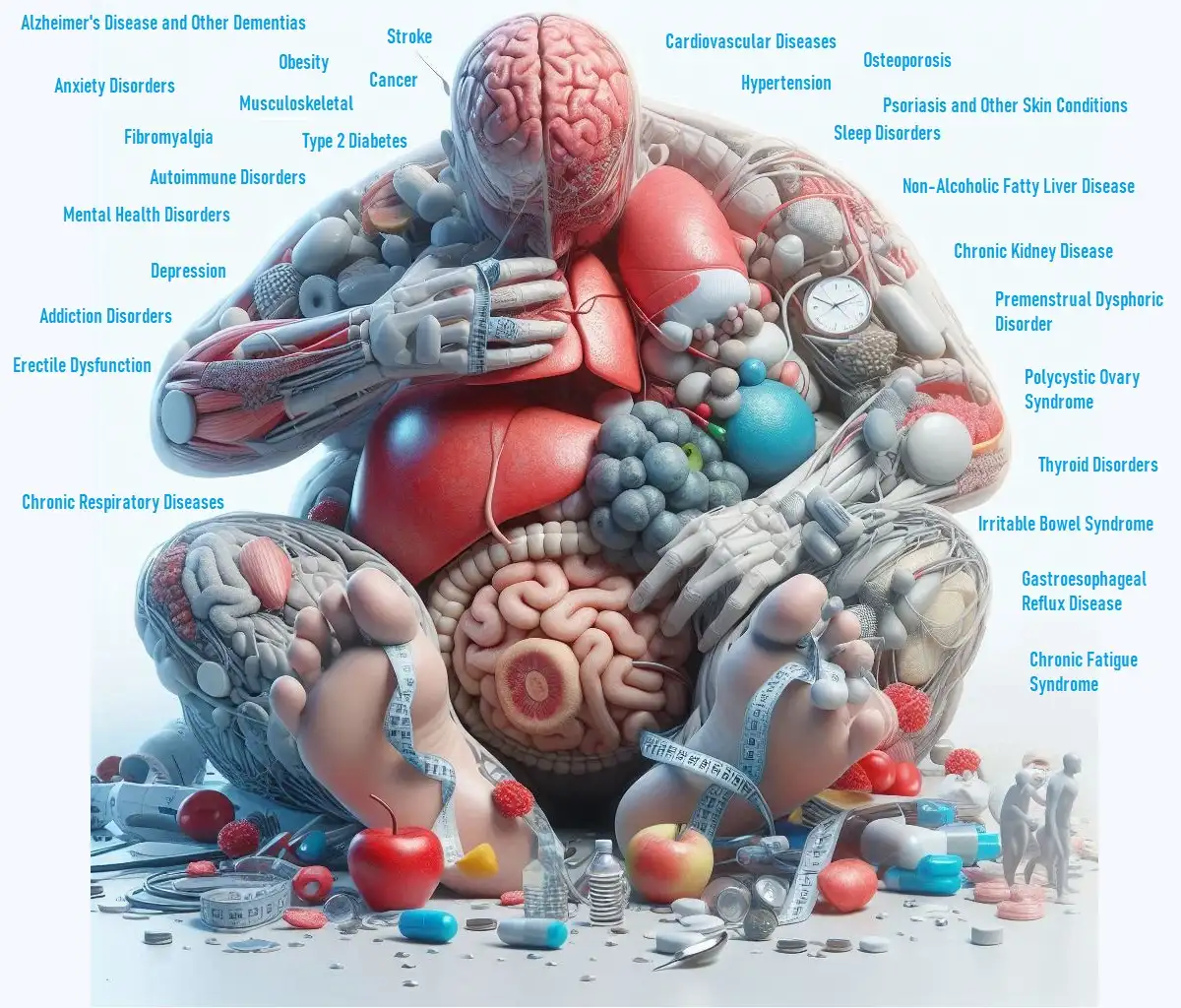
Premenstrual Dysphoric Disorder (PMDD) can turn the days leading up to your period into a time of intense physical and emotional discomfort. But you don’t have to suffer in silence. By exploring how sleep disturbances, nutrition, magnesium, cognitive behavioral therapy, and physical activity affect PMDD, you can find practical ways to manage and alleviate symptoms. Let’s dive into each aspect to help you better understand and tackle PMDD effectively.
Key Takeaways
- Sleep Disturbances: Poor sleep can worsen PMDD symptoms, making effective sleep strategies crucial.
- Nutrition: Eating a balanced diet with specific nutrients can help manage PMDD symptoms.
- Magnesium: This mineral plays a role in reducing PMDD symptoms and improving overall mood.
- Cognitive Behavioral Therapy (CBT): CBT can help address the emotional and psychological aspects of PMDD.
- Physical Activity: Regular exercise can alleviate many PMDD symptoms and boost overall well-being.
PMDD and Sleep Disturbances
How Sleep Affects PMDD
Sleep problems and PMDD often go hand in hand. Poor sleep can exacerbate the emotional and physical symptoms of PMDD, making it harder to cope:
- Mood Swings: Lack of sleep can intensify mood swings, irritability, and anxiety, all common in PMDD.
- Physical Symptoms: Insufficient rest can worsen physical symptoms like fatigue, bloating, and breast tenderness.
Improving Sleep Quality
- Sleep Routine: Establish a regular sleep schedule by going to bed and waking up at the same time every day.
- Sleep Environment: Create a comfortable sleep environment with a cool, dark room and a supportive mattress.
- Relaxation Techniques: Practice relaxation techniques before bed, such as reading, meditating, or taking a warm bath.
Impact of Nutrition on PMDD Symptoms
The Role of Diet in PMDD
What you eat can significantly affect how you feel during the premenstrual phase. A balanced diet helps regulate hormones and mood:
- Balanced Meals: Focus on a diet rich in fruits, vegetables, whole grains, and lean proteins. These foods can help stabilize blood sugar levels and reduce irritability.
- Avoiding Triggers: Reduce intake of caffeine, alcohol, and high-sugar foods, which can worsen PMDD symptoms.
Key Nutrients for PMDD
- Calcium: Adequate calcium intake can help reduce bloating and mood swings. Dairy products, leafy greens, and fortified foods are good sources.
- Vitamin B6: This vitamin can help alleviate mood swings and irritability. Found in foods like bananas, chicken, and potatoes.
Role of Magnesium in PMDD Management
Magnesium’s Benefits
Magnesium is a mineral that plays several important roles in the body, including mood regulation and muscle function:
- Mood Stabilization: Magnesium helps regulate neurotransmitters that control mood, making it beneficial for managing PMDD symptoms.
- Reduction of Physical Symptoms: It can help reduce physical symptoms like cramps and bloating.
How to Incorporate Magnesium
- Dietary Sources: Include magnesium-rich foods in your diet, such as nuts, seeds, whole grains, and leafy greens.
- Supplements: Magnesium supplements can be effective if dietary sources are insufficient. Consult your healthcare provider before starting any new supplements.
PMDD and Cognitive Behavioral Therapy
How CBT Helps
Cognitive Behavioral Therapy (CBT) is a type of therapy that helps individuals manage negative thought patterns and behaviors:
- Emotional Regulation: CBT can help you develop strategies to manage the emotional symptoms of PMDD, such as irritability and anxiety.
- Stress Management: It can also teach you effective stress management techniques, which can reduce the overall impact of PMDD.
Finding a Therapist
- Therapist Search: Look for a licensed therapist who specializes in CBT and has experience with PMDD.
- Online Resources: Many online platforms offer virtual CBT sessions, making it easier to find help that fits your schedule.
Impact of Physical Activity on PMDD Symptoms
Exercise and PMDD
Regular physical activity can have a positive impact on PMDD symptoms:
- Mood Improvement: Exercise releases endorphins, which can help improve mood and reduce feelings of depression and anxiety.
- Symptom Relief: Regular exercise can help alleviate physical symptoms like fatigue and bloating.
Incorporating Exercise
- Routine Exercise: Aim for at least 30 minutes of moderate exercise most days of the week. Activities like walking, cycling, or swimming can be effective.
- Finding Enjoyable Activities: Choose exercises you enjoy to stay motivated and make physical activity a regular part of your routine.
Conclusion
Managing Premenstrual Dysphoric Disorder (PMDD) requires a holistic approach. By addressing sleep disturbances, optimizing nutrition, incorporating magnesium, engaging in cognitive behavioral therapy, and maintaining regular physical activity, you can significantly improve your quality of life during the premenstrual phase. Always consult with your healthcare provider to tailor these strategies to your individual needs and ensure the best possible outcome in managing PMDD.




